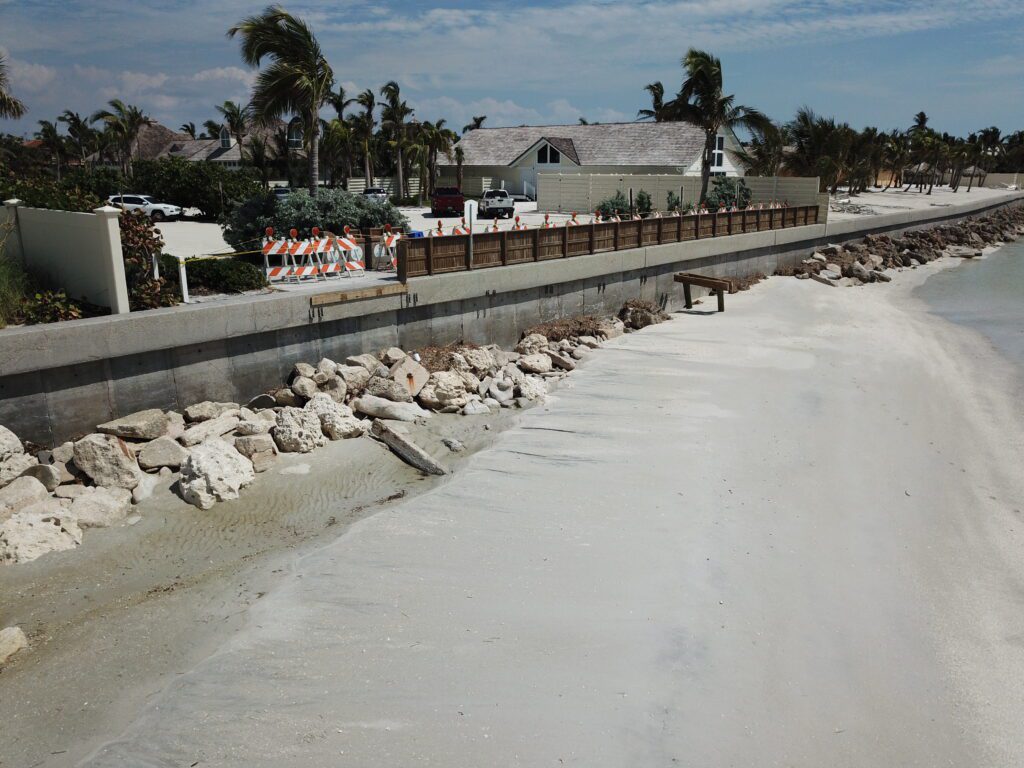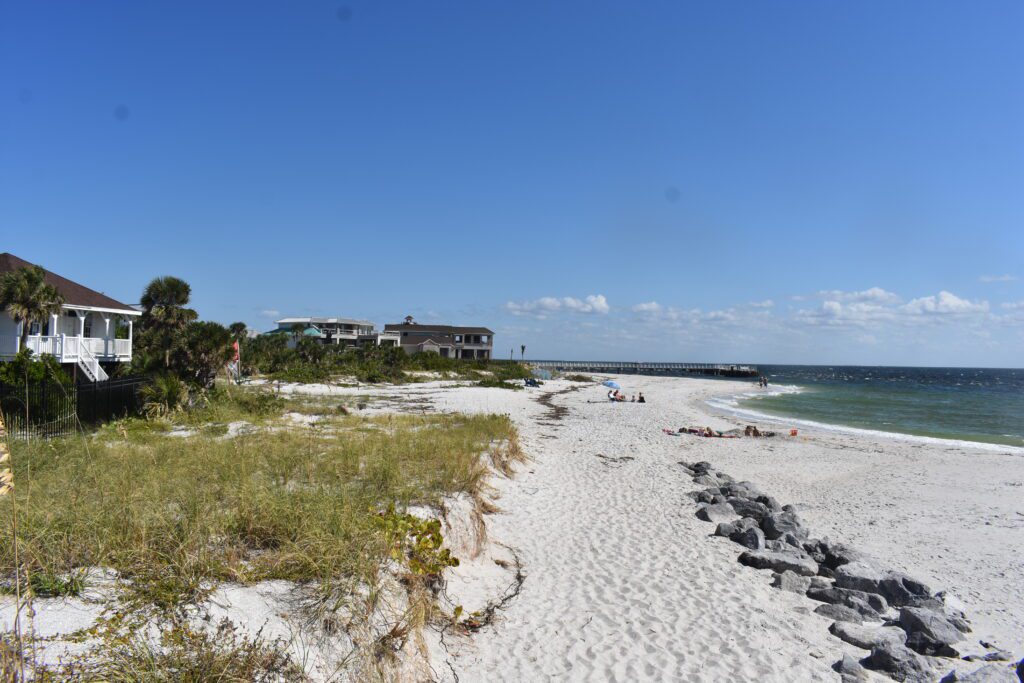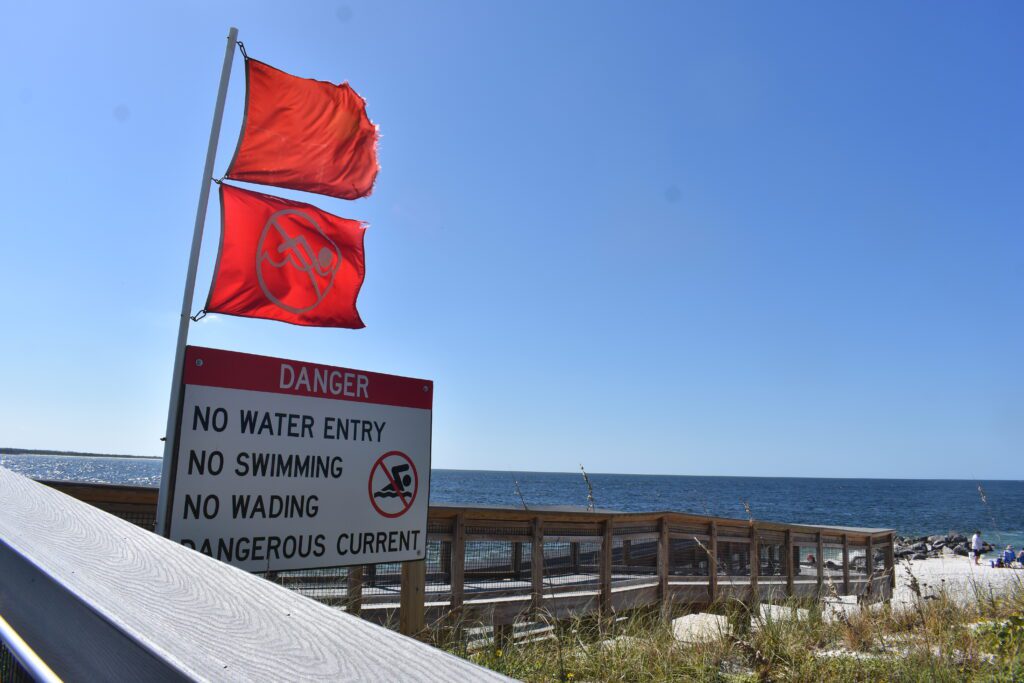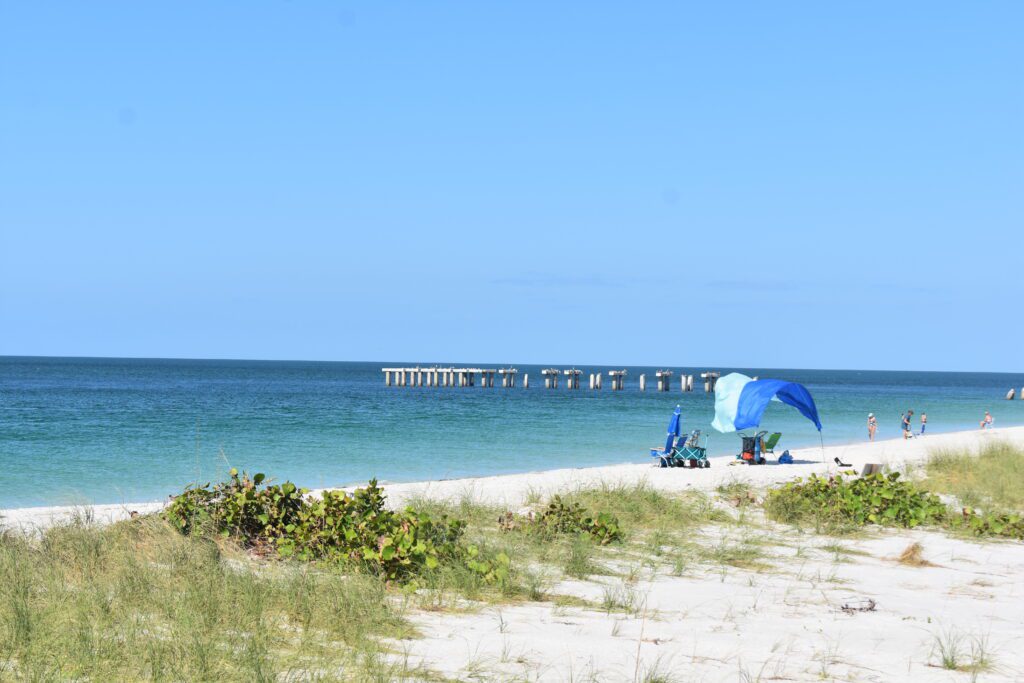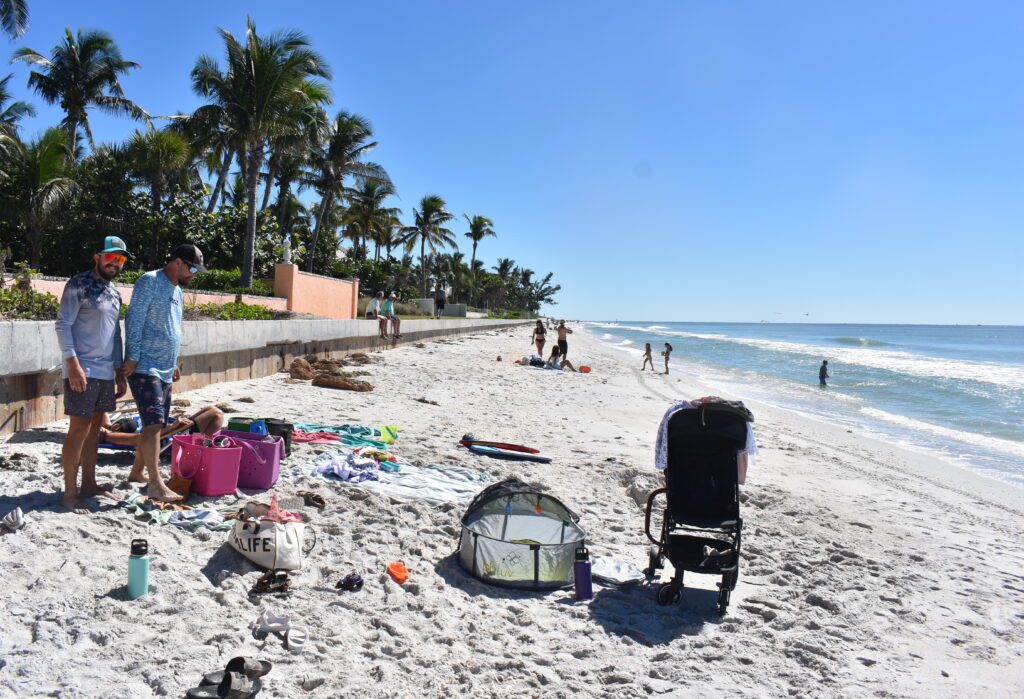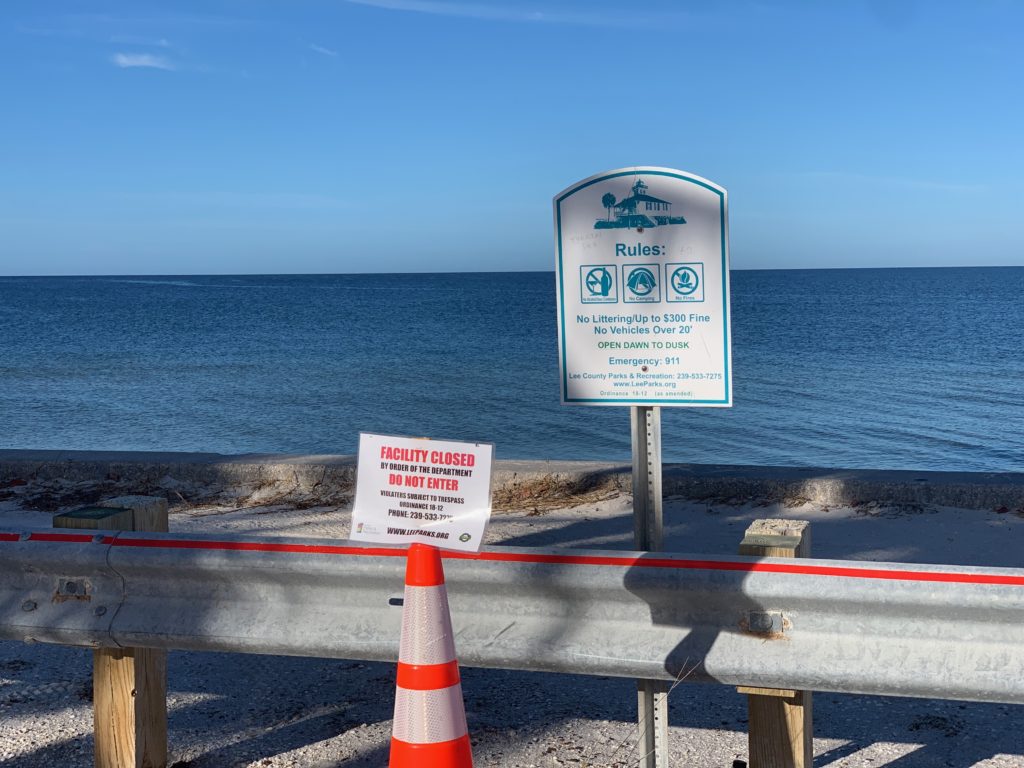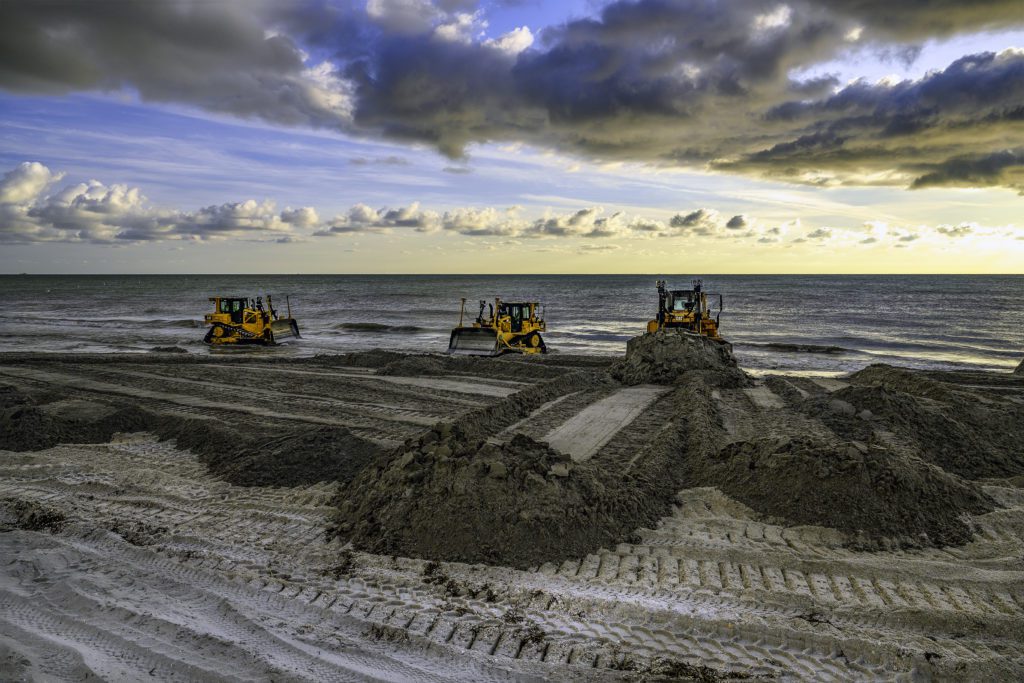Q&A with Dr. John Fletemeyer, beach ecology expert
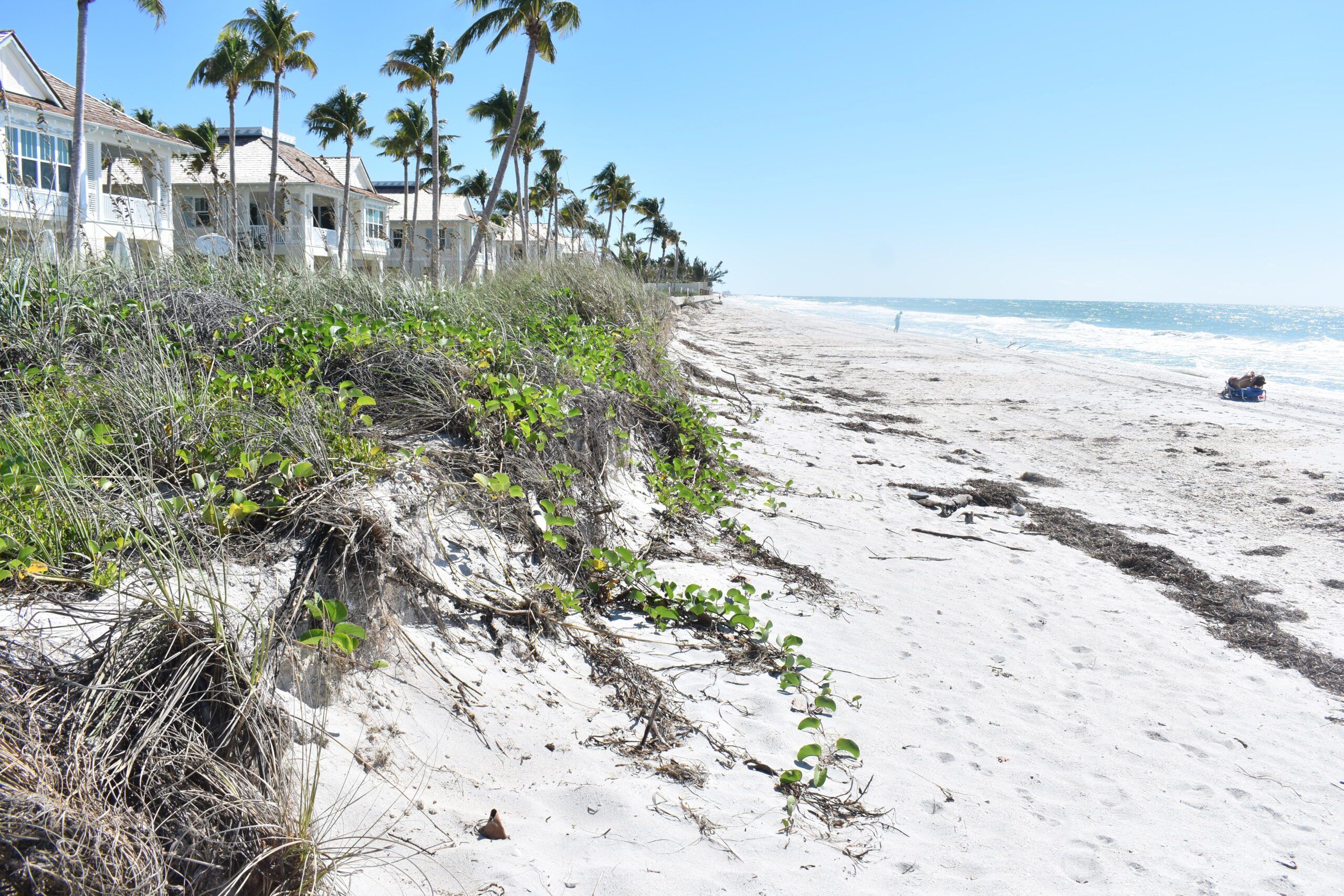
One of the nation’s biggest advocates for beaches is Dr. John Fletemeyer, a former research professor at Florida International University’s Laboratory for Coastal Research. A new resident of Useppa Island, Fletemeyer is known worldwide for his expertise in both rip currents and beach ecology. He is the co-founder of the International Rip Current Symposium program and has appeared as an aquatics expert on “60 Minutes.” But he is also a passionate advocate for Florida’s beaches, and he hopes that local officials can look at new examples across the world that have helped to rebuild beaches that don’t involve just sand pumping and renourishment.
He is, for instance, currently watching a French company, Ecoplage, that has restored beaches in Dubai and France with hidden drains and energy catching sand, and advocates small scale dune rebuilding with native plants. Below, an abridged Q&A with Fletemeyer.
Beacon: How did you get interested in beaches?
Fletemeyer: When I was nine years old, my father was vice president at Purdue, and my mother took me to a talk by Jacques Cousteau. That got me started. And I have a swimming background; I was a big-time swimmer through college. And then I went to the University of Cape Town and when I came back, I became a lifeguard on Fort Lauderdale beach and I was promoted to lifeguard supervisor.
One master’s degree was studying the aquatic behavior of the Cape of Good Hope’s baboon population. So everything I’ve done has always been related to water. I studied how baboons relate to the aquatic environment. They go down at low tide, and extract the mussels on the tidal rocks, and they learn how to make a living eating off the tides, which is the only population of primates that are able to do that. And then I came back, and became a lifeguard supervisor and became interested in turtles and rip currents and manatees. And then I decided to pursue my doctorate degree at Florida International University.
Beacon: What are we missing at this point about our beaches and our erosion here in Florida?
Fletemeyer: It’s undeniable that we’re being more and more impacted by sea level change. And we have the king tides in fall, and I know that in Fort Lauderdale where I have a home, there are new laws requiring the seawalls to be raised by a minimum of 24 inches. And all the streets are lined with borders, all these multimillion dollar construction projects. It’s like the dikes in Holland, building up these dikes, keeping the water out.
The economy is driven by public beaches, and people want to live along the ocean, on this valuable property. The recreational beaches are being threatened. And so consequently, beginning about 30, 35 years ago, the response was pumping sand on the beach, restoring the beaches and adding sand to the beaches that were eroding. And historically the way of doing that was to go out identifying a borrow pit, which is basically a big sand pit, usually located about a mile offshore. And then with giant hydraulic dredges, basically a vacuum cleaner, dumping sand onto the beach and restoring the beach with sand that’s running out. There’s very little sand lift to accomplish that.
So consequently, now more creative ways of finding sand are being used, and one’s going to the Bahamas and finding aragonite sand and basically destroying entire islands, barging sand back. And then finding other sand sources and bulldozing the sand onto the beach.
Beacon: I think the common layman’s thought is that the sand just rolls back out and you’re just putting it back off from where it was. But that’s not correct?
Fletemeyer: In some cases that’s true: Sand does migrate offshore and then it’s pumped back onto the beach. But it’s important to point out what we call a longshore drift or littoral currents. For example, on the Atlantic side, it always flows north, so the sand gets into the saltwater … It goes north and then it floats down with current. So that becomes very problematic, finding additional sand that’s washed back onto the beach. Sometimes it’s washed back and forms sandbars, but that’s not a real good source, because it’s very expensive to pump it back.
Beacon: But to do the ecological destruction of pulling up giant pieces of the seagrass in the sand bed. As I think about it, I’m like, wait, I’m not even supposed to move around in seagrass, or I get in trouble if my motor gets stuck.
Fletemeyer: There’s a huge ecological price to pay and this offshore, in these borrow pits, there’s an ecosystem, so you’re killing animals. And probably the biggest problem that is finally recognized is that when you put sand down, it weathers over time and the weather and sand cause the beach to have a certain level of compaction.
For 20 years, I had funding from the U.S. Army Corps Waterways Experiment Station in Vicksburg, Miss. And I discovered that when you pump sand onto the beach, typically the sand becomes more compact. When the sand becomes more compact, turtles find more difficulty in digging a nest.
My doctorate studies were on the impact of the urban environment on sea turtle nesting. And when you have a more compact beach, turtles dig a shallower nest. When they dig a shallower nest, more predatory animals can dig them up. More importantly, a shallower nest changes the incubation temperature. And when that happens, research that I conducted found that a different incubation temperature causes a bias in the number of males to female baby turtles that are born. And that’s published research. It’s undeniable. So it’s a very complex issue that is still poorly understood.
Beacon: You’ve presented sand pumping as a new phenomenon, but as I’ve looked at the history of it on our island before that was the practice, people would take palms and build sort of jetties and there were all sorts of imaginative, natural, small things that they did to try to catch the sand.
Fletemeyer: The other thing that they were doing too, which was absolutely a horrible thing to do, they’ve put casuarina Australian pines on the beaches, and they line most of the beaches along the west coast of Florida. They have a very shallow root structure. When a hurricane comes, they topple. The other thing about casuarinas is that they grow to be thirty to forty feet tall, so they cast a shadow on the beach. And the shadow changes the temperature of the sand, which causes a change in the incubation temperature of turtles. So it’s a snowballing effect.
Beacon: Do all of those trees need to be removed from Boca Grande?
Fletemeyer: The majority of people would tell you yes, and I would be an extreme proponent of having them removed.
Beacon: Are there replacements?
Fletemeyer: Yeah, sea oats. Okay. Sea oats and sea grapes. Sea oats have a root structure of three to one. For every foot of sea oat that you see in the dunes, you have three feet of root structure ,and sea oats and dunes are probably the best buffer against hurricanes imaginable. And that’s what we should be doing, putting in more dunes and planting sea oats. A good friend of mine, Rob Barron, has a nursery of native dune plants: dune morning glory, seas oats, sea grapes, and sea lavender, which is almost extinct. It goes on and on. We should be restoring our dunes, which have an ecology in itself.
Beacon: The beach has different plant successions …
Fletemeyer: Two important points. One is simply the cost of pumping a square yard of sand, which is escalating. And if my facts are right, Fort Myers Beach spent $19 million to $22 million pumping sand. And the second, more important factor is the engineering. Typically, if you’re lucky, a beach restoration project will last seven years, and then you’ll have to redo it again and again. In a severe storm event, all that money and work that has been spent in one year can be wiped out in a matter of days. So you’re back to square one.
Beacon: I’ve seen some beaches successfully have rip rap that’s sort of offshore, about 500 yards or so to break some of the current and begin to build behind it.
Dr. Fletemeyer: That’s very controversial, because when you’re doing that, you’re disrupting the longshore drift. You get accretion usually up current and then the erosion down current. We screwed everything up just by putting the ports in and dredging the ports and putting groins or rip rap.
Beacon: What would you say to the average person who’s sort of involved in island things, to raise the conversation? Is there a “Silent Spring” that they need to read?
Dr. Fletemeyer: People have to say, wait a minute, I’m spending all this tax money on a project that might have to be redone next year or a few years from now, and why is my tax money going to waste? Aren’t there better ways of doing this? We have to get the commissioners at the local level involved, and then get the people in the county to say, we have to recognize that our beaches generate incredible employment opportunities and recreational value for the citizens.
Beacon: Are there places that have been moderately successful that you’ve seen in Florida?
Fletemeyer: All of them are successful, but they’re successful for one month or a year or two years. But ultimately if you gauge success on time, none of them are successful. I don’t know one project where renourishment hasn’t been needed.
Beacon: Anything else?
Fletemeyer: Florida’s economy is driven by the beaches. They are more important than Disney World or anywhere else. The Beaches Sea Grant has those figures. It counts to several billion dollars, contributes to the economy and employs lifeguards, beach attendants, beach shacks, restaurants on the beach, and brings tens of thousands of people who come to Florida. We ask people all the time why did they come to Florida, and the majority of people say to go to the beaches, and so if we lose our beaches, we’re going to lose our economy, and we’re spending money that we really don’t have. The one year that we did this study, we found out that the government spent $2.2 billion in beach restoration. That’s a huge amount of money.
Find out more
Below, an interview with Fletemeyer from CBS Miami, regarding beach restoration.
Below, some beach images of Boca Grande, including latest renourishment.
